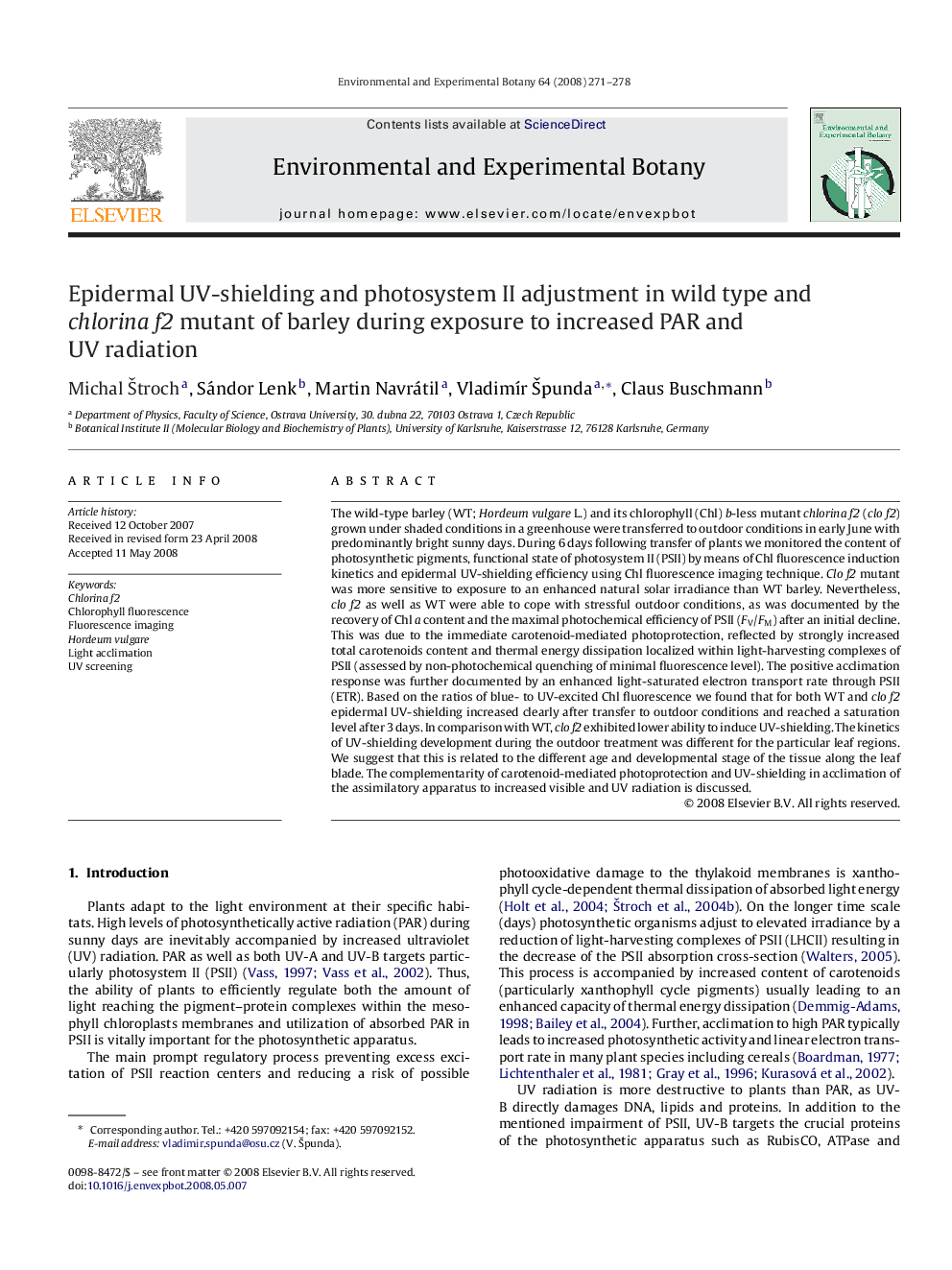| Article ID | Journal | Published Year | Pages | File Type |
|---|---|---|---|---|
| 4555328 | Environmental and Experimental Botany | 2008 | 8 Pages |
The wild-type barley (WT; Hordeum vulgare L.) and its chlorophyll (Chl) b-less mutant chlorina f2 (clo f2) grown under shaded conditions in a greenhouse were transferred to outdoor conditions in early June with predominantly bright sunny days. During 6 days following transfer of plants we monitored the content of photosynthetic pigments, functional state of photosystem II (PSII) by means of Chl fluorescence induction kinetics and epidermal UV-shielding efficiency using Chl fluorescence imaging technique. Clo f2 mutant was more sensitive to exposure to an enhanced natural solar irradiance than WT barley. Nevertheless, clo f2 as well as WT were able to cope with stressful outdoor conditions, as was documented by the recovery of Chl a content and the maximal photochemical efficiency of PSII (FV/FM) after an initial decline. This was due to the immediate carotenoid-mediated photoprotection, reflected by strongly increased total carotenoids content and thermal energy dissipation localized within light-harvesting complexes of PSII (assessed by non-photochemical quenching of minimal fluorescence level). The positive acclimation response was further documented by an enhanced light-saturated electron transport rate through PSII (ETR). Based on the ratios of blue- to UV-excited Chl fluorescence we found that for both WT and clo f2 epidermal UV-shielding increased clearly after transfer to outdoor conditions and reached a saturation level after 3 days. In comparison with WT, clo f2 exhibited lower ability to induce UV-shielding. The kinetics of UV-shielding development during the outdoor treatment was different for the particular leaf regions. We suggest that this is related to the different age and developmental stage of the tissue along the leaf blade. The complementarity of carotenoid-mediated photoprotection and UV-shielding in acclimation of the assimilatory apparatus to increased visible and UV radiation is discussed.
